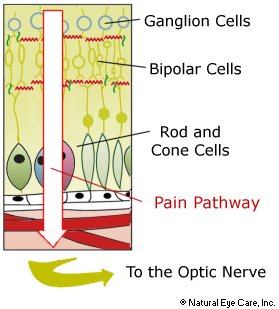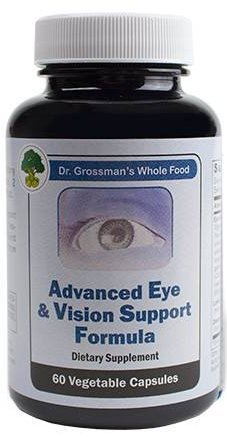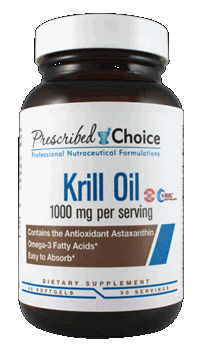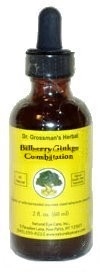Sensitivity to Light
Overview
Pain pathway Symptoms Causes Harmful drugs Self help Treatment
Light sensitivity (photophobia or photosensitivity) is a condition where your eyes are overly sensitive to light, possibly causing pain, tearing and discomfort. When light enters the eyes, it causes a chemical reaction in the back of the eyes. This reaction, effecting the rods and cones, allows us to adapt to differences between light and dark. The sensitivity may be the result of the rods and cones not recovering efficiently. Other causes include dry eyes and/or corneal issues.
Vitamins & Supplements
On a tight budget?
We recommend
Advanced Eye & Vision Support Formula (whole food) 60 vcaps
Essential |
Essential |
Very Important |
A Pain Pathway

There are several ways that the visual process can go wrong. Sensitivity to light involves delicate neural pathways which, when imbalanced physically or electro-chemically, cause pain. There is a connection between photosensitivity and migraines: nearly 80% of people who have migraines are photosensitive. Similarly, there is a connection between blepharospasm (eyelid spasm) and light sensitivity, with 80–95% of these patients reporting some level of discomfort.
It appears that a "pain pathway" starts from the front ganglion cells to the optic nerve. It is not the same as the path of light. It produces pain, not images;2 in fact, people who are blind can suffer from light sensitivity. 3
Symptoms
- Sharp or throbbing pain, a headache (including migraines), and even nausea
- Watering eyes which may sometimes be accompanied by burning sensation
- Discomfort in sunlight, in bright interior light, and/or with glare on a hazy day
- Poor night vision or problems while driving at night due to glare and oncoming light
Causes
- Those with light colored eyes and skin are more sensitive to light
- Deficiency of beta carotene and lutein.
- Thyroid condition
- Diabetes
- Dry eye syndrome makes the cornea more sensitive to light and in severe cases can damage the cornea.
- Computer eye strain. Studies have shown that people who are on the computer a lot blink less, which can result in dry eyes.
- Eye conditions such as corneal abrasion, uveitis, detached retina, with a detached retina, or glaucoma can cause photosensitivity.
- Eye surgery
- Some kinds of poisoning or rabies, as well as severe conjunctivitis, keratitis, or iritis can lead to grey rather than colored vision in addition to light sensitivity.
- Some drugs and medications can cause light sensitivity. These can include
- certain antibiotics, anti-malarial drugs, antihistamines, blood pressure medications, digoxin (used for heart failure or heart irregularity), photosensitizing drugs. (See Drugs That Harm the Eyes for a more complete list of drugs that make the eye more sensitive to light.)
Treatment
- Wear sunglasses
- Note that it is important to first try to find out if there is an underlying cause for the light sensitivity such as a thyroid problem or diabetes. A thorough eye exam is recommended to evaluate the health of the eye.
Diet, Nutrition & Lifestype Tips
Certain nutrients such as lutein, zeaxanthin, bilberry, vinpocetine, l-lysine, a number of vitamins and enzymes, and fish oil may help with light sensitivity and help preserve vision.
- Supplement with nutrients that have been found to be helpful for light sensitivity. Research shows that people with higher macular pigment levels tolerate light better.4, 5 Carotenoids such as meso-zeaxanthin, lutein, and zeaxanthin help to improve macular pigment density. When exposed to both bright, white light and short-wavelength blue light, people with greater macular-pigment optical density have better vision compared to subjects with lower optical density. Supplementation with lutein and zeaxanthin reduces glare effects.6 Recovery time for the subject with the lowest macular pigment optical density is twice as long as subjects with the highest macular pigment levels.7
- Diet & lifestyle protocol - see our recommendations for healthy vision for detailed information about that which can help or harm your vision and health.
- Make sure your eyes are lubricated with a preservative-free eyedrop if you have dry eyes.
- Research has found that the carotenoids lutein and zeaxanthin help reduce light sensitivity symptoms.1 Consume dark green vegetables such as spinach and collards, which are high in lutein and zeaxanthin.
- Always wear sunglasses outside, especially on bright days. (Blue and green eyed people are particularly sensitive to potential sun-induced damage, so the use of eye protection is paramount). Amber and grey lenses are the most effective protection against UVA/UVA and blue light.
- Increase your driving vision - clean your headlights
- Slow down. That way, you give yourself more time to react to any unexpected hazards.
- Get prescription glasses for driving at night if needed (see your eye doctor to determine if they would be helpful).
- When driving at night, look to the right. Look at the roadway's edge to the right to help you avoid the glare of oncoming headlights.
- Leave the driving till tomorrow. Drive only during the day. Even good lighting conditions at night, such as found in a big city, can be troublesome to someone with night blindness.
Light Sensitivity News
Want to learn more? See our blog news on light sensitivity.
Footnotes
1. The Influence of Dietary Lutein and Zeaxanthin on Visual Performance, James M. Stringham, et al, Journal of Food Science, January/February, 2010.
2. Güler, A.D., Ecker, J.L., Lall, G.S., Haq, S., Altimus, C.M., Liao, H.W., et al. (2008). Melanopsin cells are the principal conduits for rod-cone input to non-image-forming vision. Nature, 453:102-5.
3. Amini A, Digre K, Couldwell WT. (2006). Photophobia in a blind patient: An alternate visual pathway. Case report. J Neurosurg, 105:765-8.
4. Stringham, J.M., Fuld, K., Wenzel, A.J. (2004). Spatial properties of photophobia. Invest Ophthalmol Vis Sci, Oct; 45(10):3838-48.
5. Wenzel, A. J., Fuld, K., Stringham, J. M., Curran-Celentano, J. (2006). Macular pigment optical density and photophobia light threshold. Vis Res, 46(28):4615–4622.
6. Stringham, J.M., Garcia, P.V., Smith, P.A., McLin, L.N., Foutch, B.K. (2011). Macular pigment and visual performance in glare: benefits for photostress recovery, disability glare, and visual discomfort. Invest Ophthalmol Vis Sci, Sep 22; 52(10):7406-15.
7. Stringham, J.M., Hammond, B.R. (2008). Macular pigment and visual performance under glare conditions. Optom Vis Sci, Feb; 85(2):82-8.
 info@naturaleyecare.com
info@naturaleyecare.com



 Home
Home



 Vision
Vision Vision
Vision



 Health
Health Health
Health Research/Services
Research/Services Pets
Pets About/Contact
About/Contact





